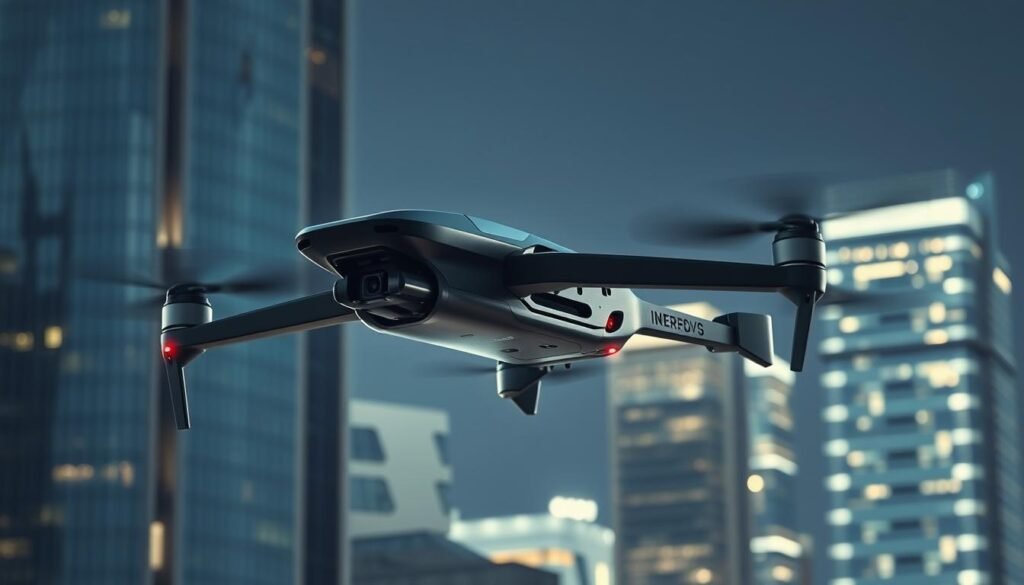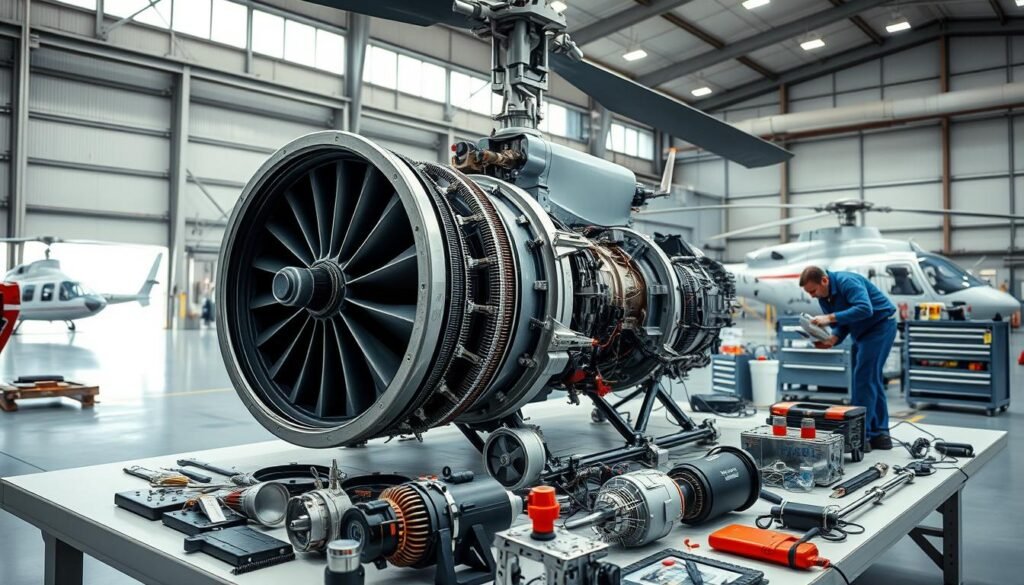The aviation industry has seen tremendous advancements in technology over the years, and helicopters are no exception. One of the most significant developments in recent years is the introduction of digital cockpits. These high-tech systems are transforming helicopter navigation, providing pilots with more information, better situational awareness, and improved safety. In this article, we’ll explore the role of digital cockpits in modern helicopters and how they are revolutionizing the way pilots navigate through the skies.
1. What Are Digital Cockpits?
A digital cockpit, often referred to as a “glass cockpit,” replaces the traditional analog dials and gauges found in older helicopters with digital displays and integrated flight systems. These cockpits use advanced avionics, combining data from multiple sources to present real-time information in a clear, user-friendly format. By consolidating flight data onto digital screens, pilots can access critical information more easily and make informed decisions faster.
Key Features of Digital Cockpits:
- Multifunction Displays (MFDs): These are large screens that display various types of information, such as navigation data, weather, engine performance, and flight path.
- Synthetic Vision Systems (SVS): SVS provides pilots with a 3D view of the terrain, even in low visibility conditions, using real-time data from sensors and GPS.
- Flight Management Systems (FMS): These systems automate many flight functions, including route planning, altitude management, and fuel optimization, reducing the pilot’s workload.
2. Improved Navigation and Situational Awareness
Digital cockpits have greatly enhanced helicopter navigation by providing pilots with more precise and real-time data. One of the most important advantages is the integration of multiple navigation systems into a single interface, allowing pilots to manage complex flight paths more efficiently.
Key Benefits for Navigation:
- Real-Time GPS Integration: Modern digital cockpits are integrated with global positioning systems (GPS) that provide precise real-time location data. This allows pilots to navigate with greater accuracy, especially in challenging environments or remote areas.
- Moving Map Displays: Digital cockpits feature moving map displays that show the helicopter’s current position in relation to its surroundings. Pilots can see obstacles, airports, and terrain, helping them navigate safely through complex airspace.
- Automatic Dependent Surveillance-Broadcast (ADS-B): This system tracks aircraft positions and transmits data to air traffic control and other aircraft, allowing pilots to have a clearer view of surrounding traffic and reducing the risk of collisions.
Enhanced Situational Awareness:
- Terrain Awareness and Warning Systems (TAWS): TAWS alerts pilots to potential obstacles or terrain hazards, improving safety in low-visibility situations or mountainous regions.
- Weather Monitoring: Digital cockpits can display real-time weather data, including storm patterns, wind speed, and precipitation. This allows pilots to avoid hazardous weather conditions or adjust their routes accordingly.
3. Increased Safety with Digital Cockpits
Safety is a top priority in aviation, and digital cockpits contribute to safer helicopter operations by providing better information and reducing pilot workload. By automating many tasks and offering advanced warning systems, digital cockpits help prevent accidents and reduce human error.
Safety Features of Digital Cockpits:
- Synthetic Vision Systems (SVS): SVS creates a virtual view of the surrounding terrain, even in fog or at night, giving pilots enhanced situational awareness in poor visibility conditions. This helps reduce the risk of controlled flight into terrain (CFIT) accidents.
- Automated Alerts: Digital cockpits can provide pilots with automated alerts for engine issues, fuel levels, and flight deviations, allowing for quicker responses to potential problems.
- Helicopter Terrain Awareness and Warning System (HTAWS): HTAWS provides real-time alerts about terrain or obstacles in the helicopter’s flight path, giving pilots more time to react and avoid potential hazards.
Reduced Pilot Workload:
- Flight Automation: Many digital cockpits are integrated with flight management systems that automate key tasks, such as altitude adjustments, course corrections, and fuel optimization. This allows pilots to focus more on situational awareness and decision-making.
- Intuitive Displays: Digital cockpits provide pilots with intuitive displays that consolidate multiple data sources into easy-to-read formats, reducing the need to scan various instruments and simplifying the decision-making process.
4. Enhanced Communication and Data Sharing
In addition to improving navigation and safety, digital cockpits facilitate better communication between pilots, air traffic control, and other aircraft. These systems allow for real-time data sharing, improving coordination and flight efficiency.
Key Communication Advancements:
- Integrated Communication Systems: Digital cockpits allow for seamless communication between the helicopter and air traffic control (ATC), ground teams, and other aircraft. These systems ensure that pilots have access to the latest information regarding airspace, flight paths, and weather conditions.
- Data Sharing with ATC: Real-time data sharing with ATC enhances coordination and improves safety, as controllers can monitor the helicopter’s position, altitude, and speed. This reduces the risk of mid-air collisions and ensures smoother operations in busy airspace.
- Collaborative Decision Making (CDM): Some advanced cockpits are equipped with CDM tools, allowing pilots and controllers to work together more effectively in dynamic situations, such as rerouting due to weather or managing congested airspace.
5. Customization and Adaptability of Digital Cockpits
One of the strengths of digital cockpits is their adaptability. These systems can be customized based on the specific needs of the mission, allowing pilots to choose the information that is most relevant for their flight.
Key Customization Features:
- Personalized Displays: Pilots can customize the information displayed on the screens based on their preferences and the demands of the mission. For example, during search-and-rescue missions, the pilot may prioritize mapping data, while in medical transport missions, onboard medical monitoring may take precedence.
- Mission-Specific Modules: Some digital cockpits are equipped with mission-specific modules that allow operators to integrate specialized tools, such as infrared cameras for night operations or radar systems for environmental monitoring.
Mission Versatility:
- Search and Rescue: Digital cockpits equipped with advanced navigation tools and real-time weather updates enhance search-and-rescue missions, allowing pilots to operate in difficult conditions and locate people in need more quickly.
- Medical Transport: EMS helicopters benefit from digital cockpits by providing more stable flight paths, real-time communication with hospitals, and onboard monitoring systems that track patient vitals during flight.
6. The Future of Digital Cockpits
The future of helicopter navigation is likely to be shaped by further advancements in digital cockpit technology. As artificial intelligence (AI) and autonomous flight systems continue to evolve, helicopters will become even more efficient and safer.
Key Future Trends:
- AI Integration: The integration of AI into digital cockpits will enable more advanced flight automation, reducing pilot workload and improving decision-making during critical phases of flight.
- Augmented Reality (AR): Augmented reality could be used in future cockpits to overlay additional information onto the real-world view, enhancing situational awareness and providing pilots with more intuitive navigation tools.
- Autonomous Flight: As autonomous flight systems are developed, digital cockpits will play a key role in managing these systems, allowing helicopters to operate with minimal human intervention in certain missions, such as cargo transport or reconnaissance.
Conclusion
Digital cockpits have transformed helicopter navigation by providing pilots with advanced tools for real-time data monitoring, navigation, and communication. These systems improve safety, reduce pilot workload, and enhance situational awareness, making helicopters more efficient and reliable. As technology continues to evolve, the capabilities of digital cockpits will expand, further revolutionizing helicopter operations and ensuring safer and more effective flights in the years to come.
Related Articles
- Understanding Helicopter Vibration Analysis: Key to Preventing Major Failures
- How AI and Big Data Are Shaping the Future of Helicopter Maintenance
- Upgrading Helicopter Systems: When and Why to Modernize Your Aircraft
- The Importance of Regular Avionics Checks for Helicopter Performance
- Helicopter Maintenance in Extreme Weather Conditions: What Technicians Need to Know
More from This Category
- Digital Cockpits: How Modern Technology Is Transforming Helicopter Navigation
- The Role of Predictive Maintenance in Helicopter Fleet Management
- Innovative Materials in Helicopter Design: Enhancing Durability and Efficiency
- How Helicopter Technology Is Revolutionizing Emergency Response Operations
- Rotor Blade Maintenance: Why It’s Critical for Safe Flight
- The Future of Autonomous Helicopters: What Technology Holds for the Aviation Industry
- Helicopter Engine Maintenance: Best Practices for Longevity and Efficiency
- How Advances in Avionics Are Improving Helicopter Safety and Performance
- Routine Helicopter Maintenance Checklist: What Every Pilot Should Know
- The Evolution of Helicopter Technology: From Early Models to Modern Innovations



